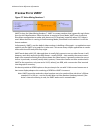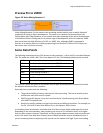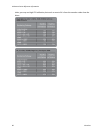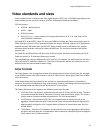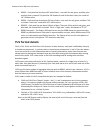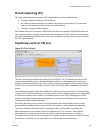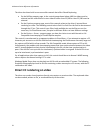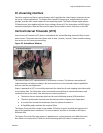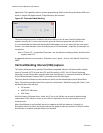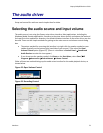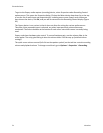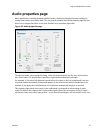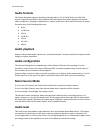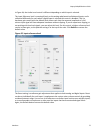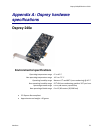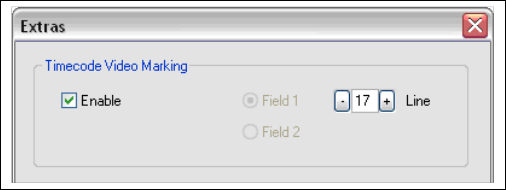
AVStream Driver Reference Information
72 ViewCast
application. This capability requires custom programming. Refer to the Osprey AVStream SDK Users’
Guide. A sample SDK applet named TCApp illustrates the interface.
Figure 61. Timecode Video Marking
Timecode stamping must be enabled in the driver before it can be used, and the field and line
number correctly set. To access the controls, go to the Device property tab and click Extras…
It is recommended that timecode marking be disabled when not in use, especially the auto search
feature – on a slow machine it uses several percent of CPU bandwidth – especially if timecodes are
not present.
Note: VITC and LTC – Longitudinal Timecode – are two distinct encoding systems, and this driver
supports only VITC.
A suggested reference on timecode is Timecode: a user’s guide – 3rd ed., John Ratcliff, Focal Press,
1999.
Vertical Blanking Interval (VBI) capture
The Osprey AVStream driver provides DirectShow-compatible VBI pins. VBI data includes Vertical
Interval Timecode (VITC) in both the NTSC and PAL worlds. In NTSC, line 21 Closed Captioning
(although it is part of the video interval rather than true VBI data), is commonly treated as VBI data.
In PAL, World Standard Teletext (WST) is encoded in the VBI data region.
The driver delivers VBI data as raw waveforms, which are then decoded by external DirectShow
filters. DirectShow provides three filters under the classification “WDM Streaming VBI Codecs” that
will decode data from VBI pins:
CC Decoder
NABTS/FEC VBI Codec
WST Codec
With the Osprey AVStream driver, either the CC pin or the VBI pin can be used to obtain closed
caption data. If the VBI pin is used, an extra filter is required to turn the raw waveform into CC
character pairs.
When SimulStream is not installed, the driver supports two VBI pin instances. In practice, a
DirectShow Smart Tee Filter can be inserted into the graph to make any number of VBI pins. When
SimulStream is installed, multiple VBI pins are allowed.



